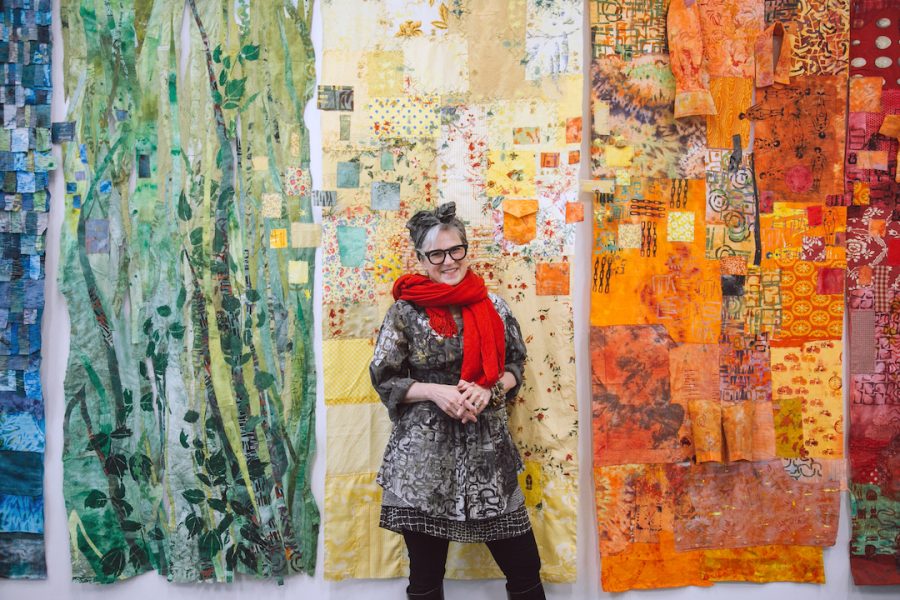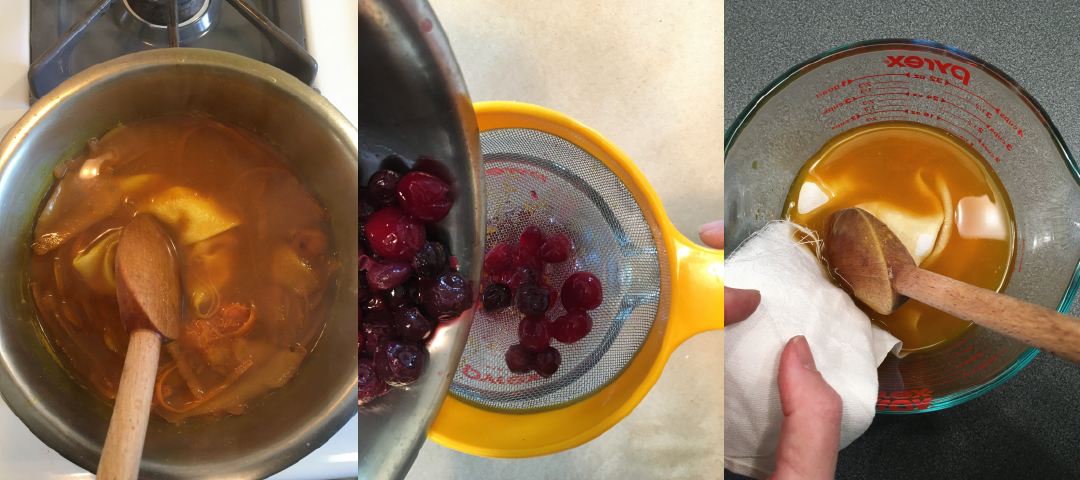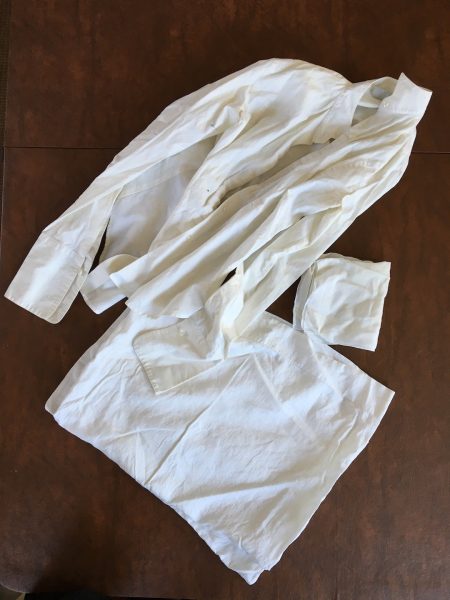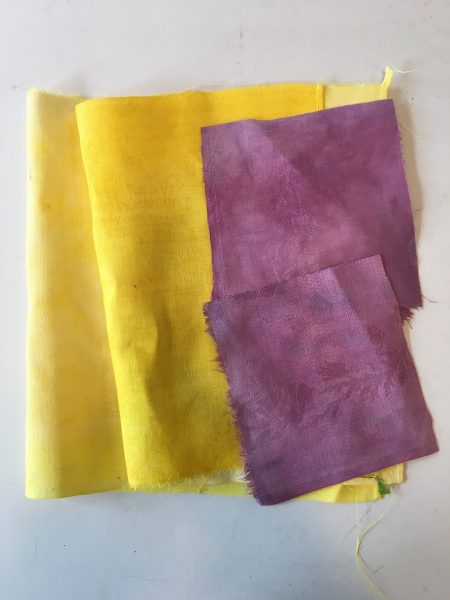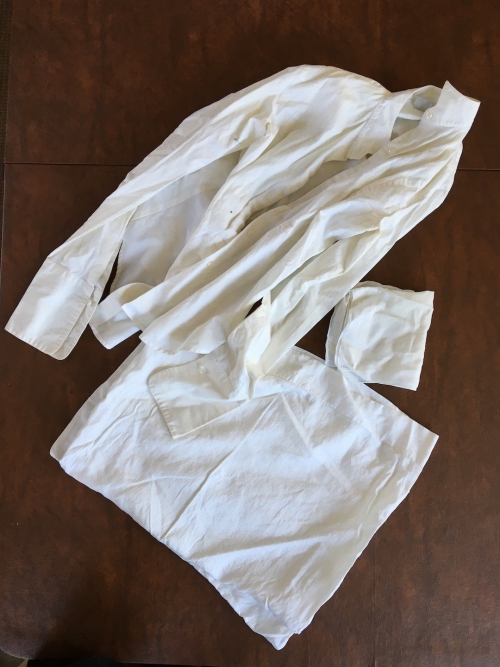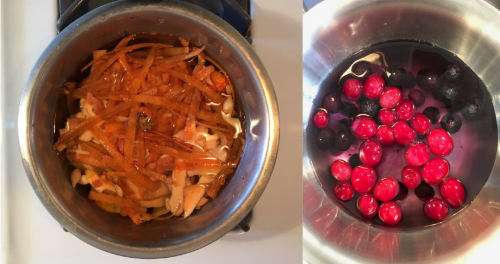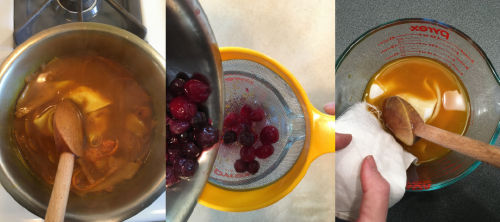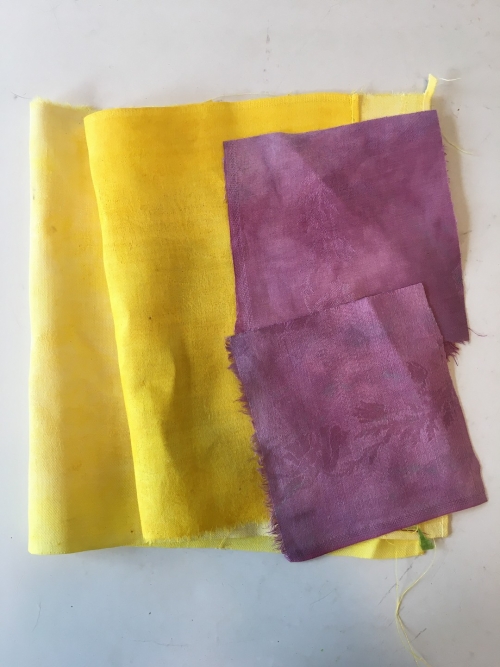Designed for kids and grown-ups to do together. Experiment with measuring, cooking, and color to create a vibrant result.
This activity involves the use of a hot stovetop.
We’re excited to welcome artist Merill Comeau as a guest contributor for this week’s Art Lab at Home! Merill is the mixed-media fiber artist behind the current Bank of America Art Lab installation Threads of Connection. We welcome you to try eco-dyeing: The process of adding color to fabrics using plant matter. This is a fun way to reuse and recycle supplies you have on hand, like old fabrics, leftover veggies and fruit, and even coffee grounds!
You will need:
- Newspaper or plastic to protect your work surface from stains
- Salt or white vinegar (which will be added to water to create your mordant)
- A non-reactive pan such as an aluminum saucepan (If possible, dedicate a pan just for dyeing to be sure no substances are crossing over into your food preparation later. Merill used an old metal dog bowl!)
- Tongs or wooden spoon
- Soaking bucket and/or bowls (you can also soak directly in your pan)
- Plant sources for color: Old berries, yellow vegetable peelings, onion skins, turmeric, beets, purple cabbage, tea, or coffee — Experiment!
- Pre-washed white or light-colored cotton fabric cut into squares approximately 8×8 inches. Possible sources include recycling old pillowcases, blouses or men’s shirts, hankies or napkins.
Steps:
1. Prepare your fabric. You will need to treat your fabric with a mordant to help the dye to adhere to your fabric. To create and use your mordant:
- If you are using berries, combine ¼ cup of salt with four cups cold water.
- For other plant materials, Combine 1 cup vinegar with four cups cold water.
- Soak your fabric in mordant for one hour.
- Remove and rinse your fabric with cold water. You don’t need to dry it as you can dye it damp!
2. Prepare your dye. Generally, you’ll want to add 1 cup of plant material to 2 cups of water in your non-reactive pan. Feel free to experiment depending on what you have on hand! Bring your concoction to a slow simmer on your stove top. If your kitchen has a vent fan, use it to remove steam. You will see the water becoming colorful in just 20-30 minutes.
3. Add the fabric to the dye. You can either strain and discard the plant materials and then add your fabric to the remaining dye solution or add your fabric directly to the simmering pot (Merill likes to add her fabric to the pot believing the heat helps set the stain).
4. Soak your fabric. Remove your fabric after one hour or keep it soaking overnight as the dye sets and cools. Experiment with soaking times and see if your results differ!
5. Rinse your fabric with cold water and let it air dry. If you’d like, you may iron your fabric on the cotton heat setting.
6. Are you ready to make something with your unique eco-dyed fabric? Check out this site for simple hand sewing instructions and ideas for things to make can be found here. Or create a fabric collage for the Threads of Connections digital quilt!
